Q&A: Birmingham bombings inquests reopen
- Published
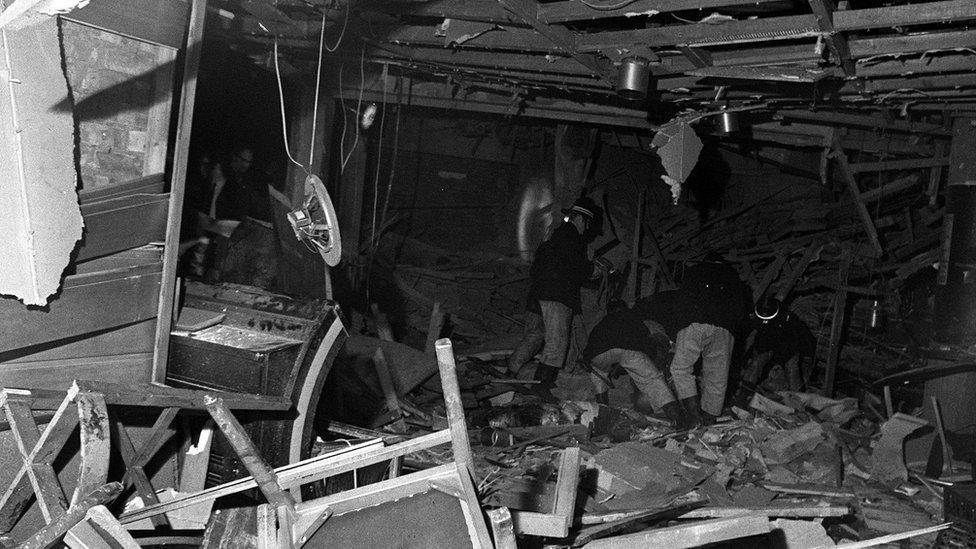
Ten of the people who died had been at the Mulberry Bush pub in the city
A coroner has reopened the inquests into the deaths 21 people killed in the Birmingham pub bombings more than 40 years ago.
Many of the families regard the inquests as their last chance to find out exactly what happened on the night of 21 November, 1974.
Six men were convicted and then acquitted of the atrocity and no-one has since been convicted of involvement in the bombing, which is widely attributed to the Irish Republican Army (IRA).

Why were the inquests closed originally?
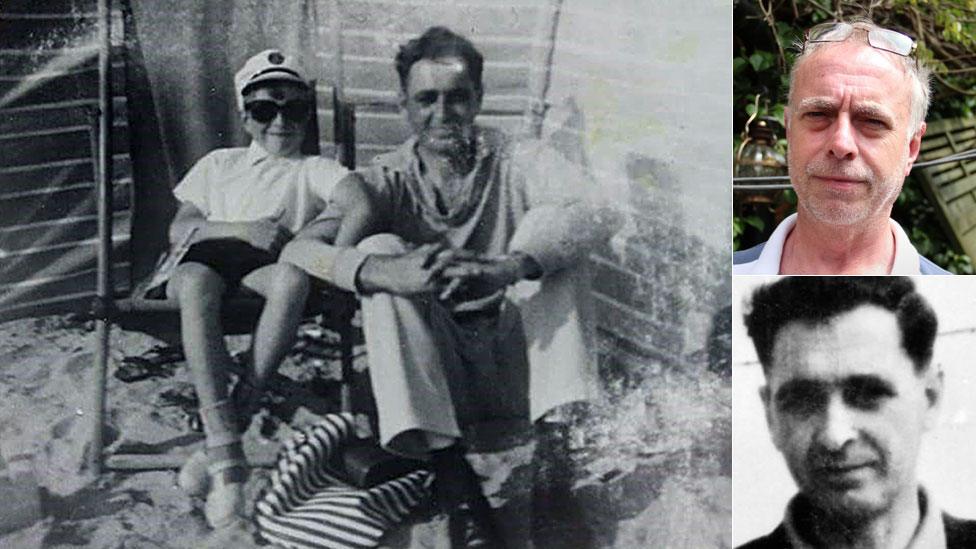
Paul Rowlands' father John was killed in the blast at the Mulberry Bush. The pair are pictures on a beach in Majorca on a family holiday
The role of a coroner is to determine who the deceased was and how, when and where they died. If they feel they need further investigation, an inquest is held.
Inquests were therefore opened into the 21 victims but adjourned to allow for a criminal investigation. Because that investigation resulted in a conviction, it was concluded the questions about the deaths had been answered by the trial.
However, when the convictions of the Birmingham Six were quashed in 1991, the inquests remained closed.
Julie Hambleton, whose 18-year-old sister Maxine died in the attacks, said: "The lives of 20 families changed on that night and they have never been told the truth about what happened.
"There are many more - the casualties and those who came to their aid on the night - whose lives were changed forever, too".

Why have the inquests been reopened now?

Bill Craig's brother James was fatally wounded in the bombings. He died in hospital 18 days later
The move to reopen the inquests follows a campaign by the Justice 4 the 21 campaign group, external, led by family members of victims of the bombings.
They met Home Secretary Theresa May and Northern Ireland Secretary Theresa Villiers in March 2015 to lobby for an inquest. An application for a fresh inquest was also lodged with the attorney general.
Relatives of Maxine Hambleton, Trevor Thrupp and James Craig made an application to Louise Hunt, the senior coroner for Birmingham and Solihull, for the hearings to resume.
Human rights lawyer Kevin Winters, who has represented families of victims of the Troubles in Northern Ireland, said he believed there was a basis for an inquest, which would provide families with access to certain "disclosure materials" he claimed had been kept from them.

How will the inquests help?
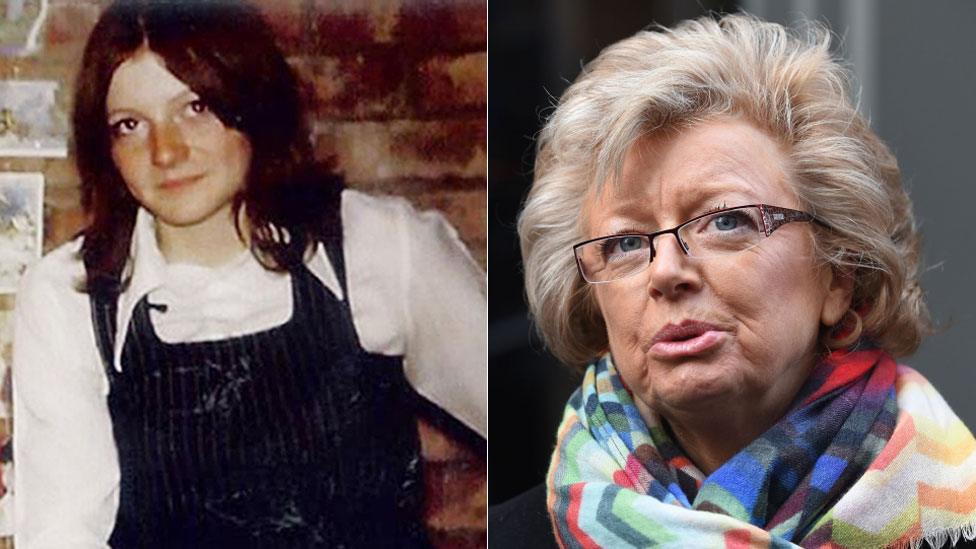
Maxine Hambleton (left) was 18 when she was killed. Her sister Julie, who was 11 at the time, has campaigned since for the inquests to be reopened
This could be the last chance, in their lifetimes, for campaigners to have evidence heard in public which was not available in 1974.
They hope Ms Hunt will call key witnesses, who the families believe can identify the bombers.
Ms Hambleton said: "All we want is one thing - justice. No more, no less. We don't want money, we don't want an apology. All we want is justice."

What happened that night?
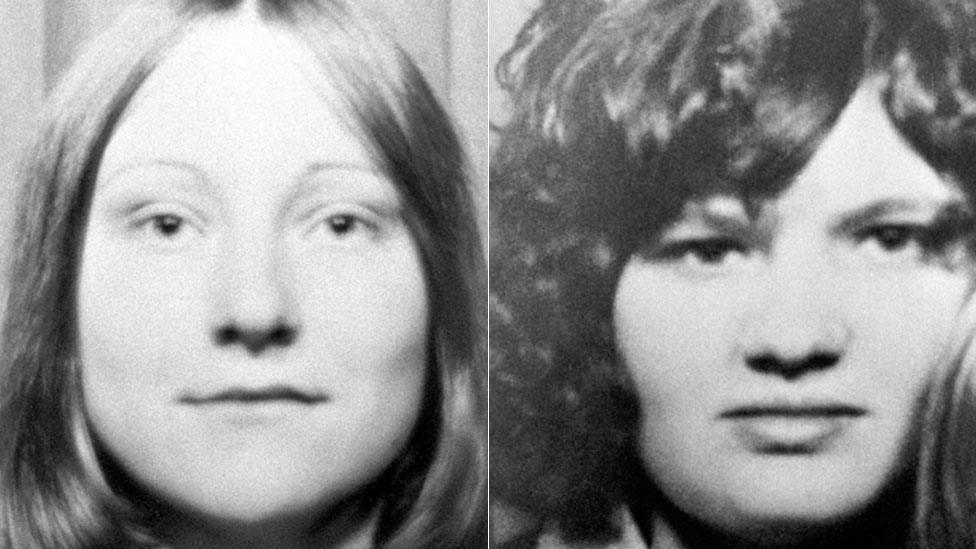
Jane Davis (left) was 17 when she was killed in the Tavern in the Town bombing. Pamela Palmer (right) was 19 and died in the Mulberry Bush blast
On the evening of 21 November 1974, hundreds of people, many who were young and out with friends, family and work colleagues, were inside two busy Birmingham city centre pubs.
Meanwhile, a man telephoned the Birmingham Post and Mail newspaper to warn two bombs had been planted in the city centre. Officers in Birmingham, which had seen a spate of IRA bombings during the mainland campaign, rushed to the scene, but were too late.
At 20:18 GMT a bomb exploded in a duffel bag in the Mulberry Bush pub at the base of the city's iconic Rotunda building, killing 10 people. Two minutes later, a second bomb went off in the Tavern in the Town, leaving 11 more dead.
A total of 222 people were also injured in what was, at the time, the worst terrorist atrocity on English soil.

Who were the victims?
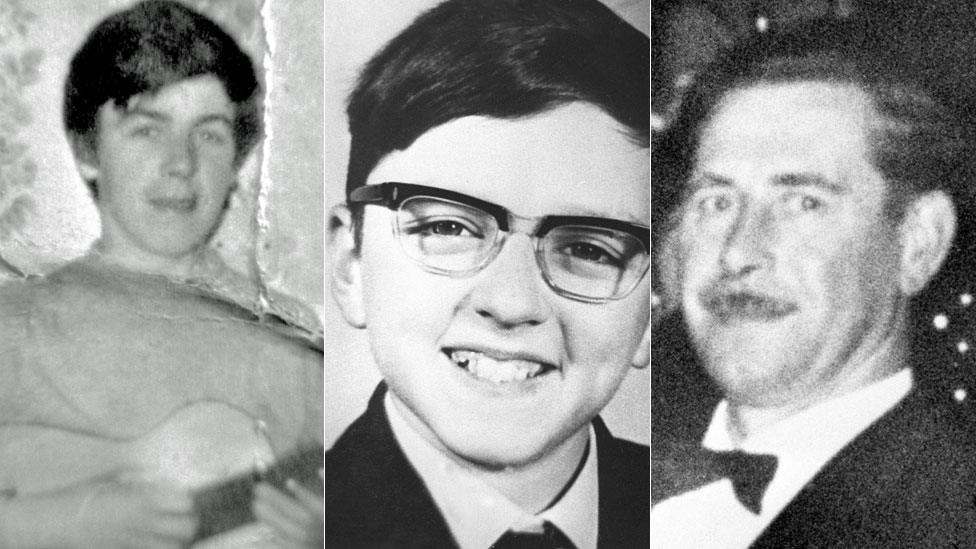
Eugene Reilly, 23, Stephen Whalley, 21, died in the Mulberry Bush blast, and John Clifford Jones, 51, was killed at the Tavern in the Town
The 21 people killed - seven women and 14 men - were aged between 17 and 51. Thirteen of the victims were under 30, including five in their teens.
Over the decades, stories have emerged of those who died and some of the people seriously injured have spoken of their experience and the lasting affect it had on them.
Ms Hambleton, who has led calls for a public inquiry into the attacks, recalled how her "world fell apart" aged 11 when her 18-year-old sister Maxine - who she described as being "like another mother" - was killed while handing out party invitations in a pub.

The Birmingham Six
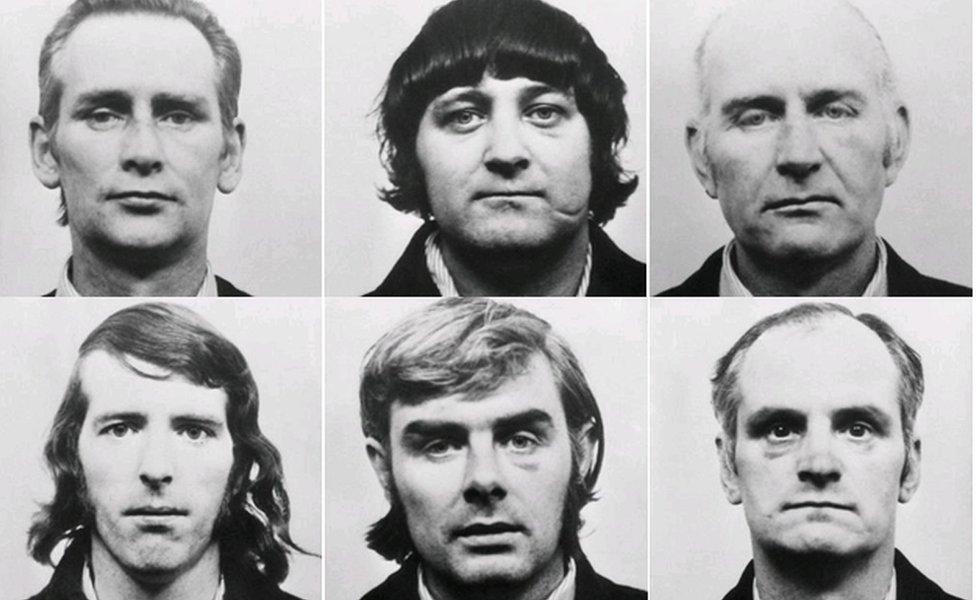
Paddy Hill, Gerry Hunter, Johnny Walker, Hugh Callaghan, Richard McIlkenny and Billy Power were wrongly convicted of the 1974 Birmingham pub bombings
Paddy Hill, Gerry Hunter, Johnny Walker, Hugh Callaghan, Richard McIlkenny and Billy Power were from Northern Ireland and had lived in Birmingham since the 1960s.
They had left the city shortly before the pub bombs exploded.
They were on their way to the funeral of an IRA member who had died while setting a bomb in Coventry, and were arrested while waiting for a ferry to Northern Ireland.
The men claimed in court they had confessed only after being beaten by police but were convicted.
In January 1987, their first appeal was rejected.
The campaign for their release gathered pace headed by the Labour MP Chris Mullin, and a new inquiry by Devon and Cornwall Police into the original investigation uncovered irregularities in the police case - including evidence of tampering with statements.
The next appeal was successful. The six walked free in 1991 - nearly 17 years after being convicted.
No-one has ever been brought to justice for the 21 murders., although members of the IRA are believed to have been responsible.
West Midlands Police began re-investigating the case in 1991 and officers generated 5,000 documents, statements and reports. But in 1994, the force said there was insufficient evidence for any prosecutions.

Who were the IRA?
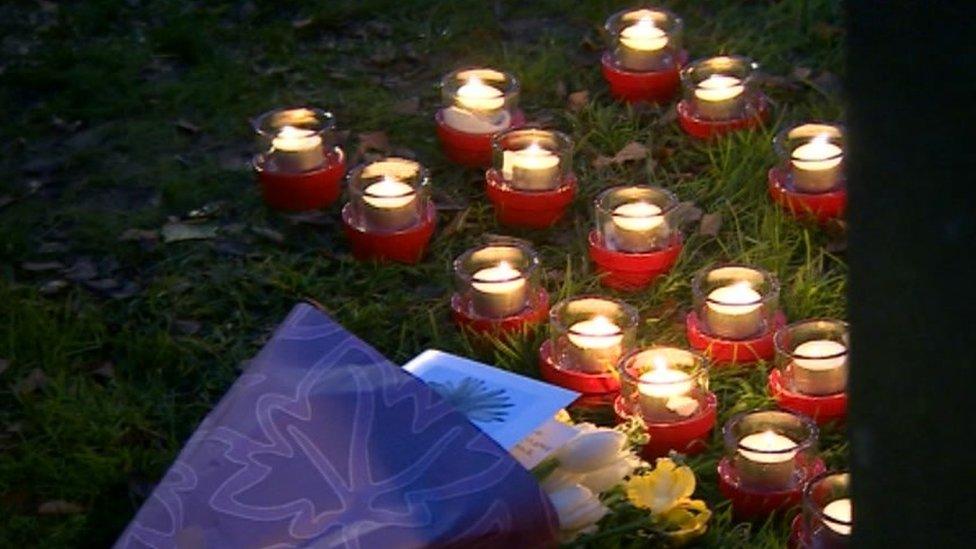
Families lit candles at a memorial service for the victims in November 2015
In 1969 Northern Ireland's Catholics began to demand civil rights. Protestants resisted and attacked some Catholic areas.
When the "old" IRA (that had fought to obtain self government in Ireland's War of Independence) failed to defend Catholic enclaves - the handful of IRA men forged a split in the movement and founded the Provisional IRA.
After Bloody Sunday on 30 January 1972 - in which 13 unarmed Catholic civilians were shot dead by British soldiers - the numbers of young Catholics joining the IRA swelled.
Later that year, amid a sustained bombing campaign in Northern Ireland, the IRA approached the British government for peace talks but the discussions faltered over demands for British military and political withdrawal from Northern Ireland.
By 1974, the IRA extended its bomb attacks to England.
Bombs in Guilford and Woolwich killed six people and injured many more. The campaign's horrific climax was when bombs went off in the two Birmingham pubs - 19 people were killed (two died later in hospital) and 182 were injured.
- Published8 February 2016

- Published21 November 2014

- Published21 November 2014
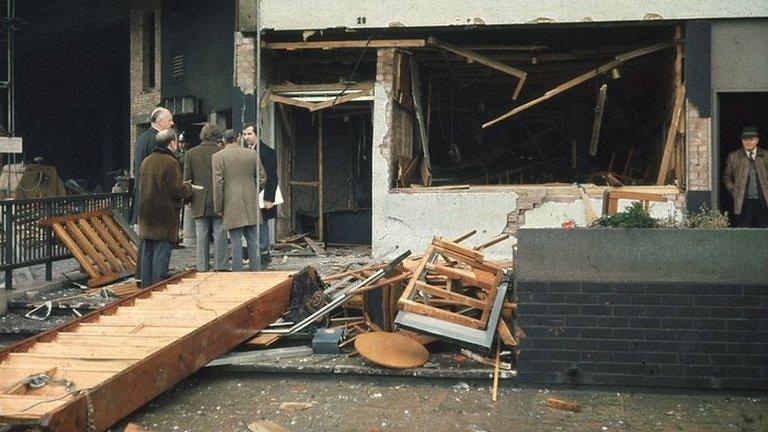
- Published14 November 2014
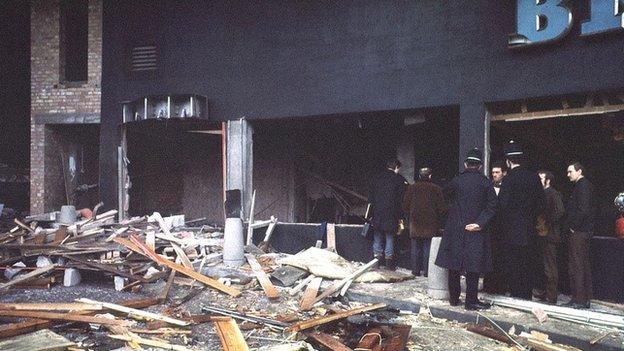
- Published11 May 2013
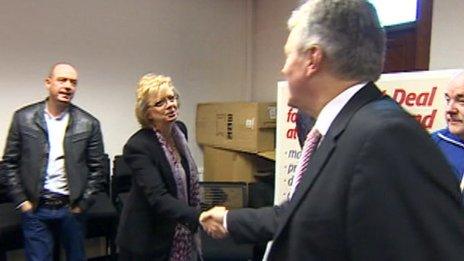
- Published14 March 2011